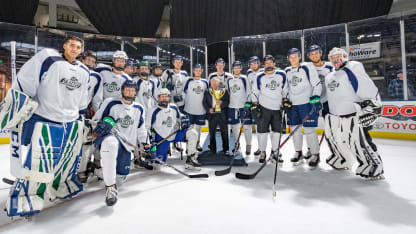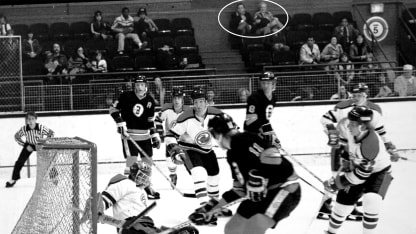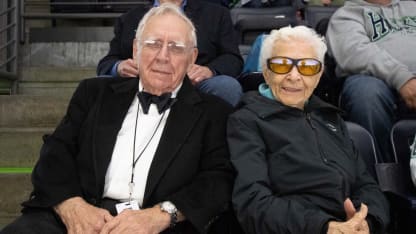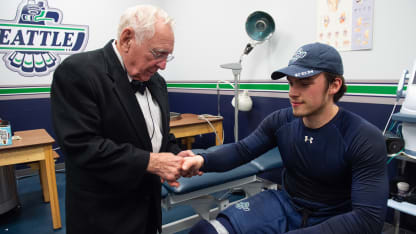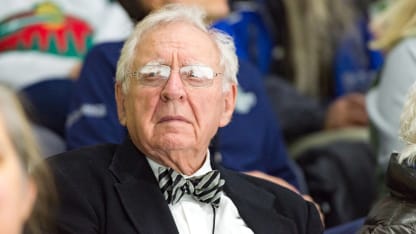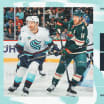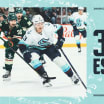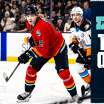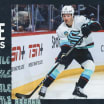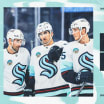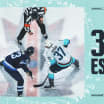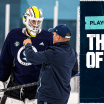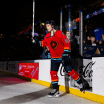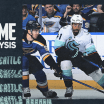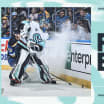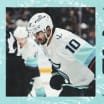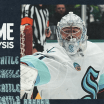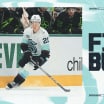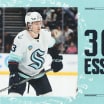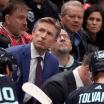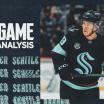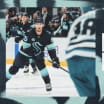Along the way, he watched Marleau (signed again by the NHL's San Jose Sharks for this season and a two-goal scorer in Thursday's 5-4 win at Chicago) bust out as a legitimate NHL prospect, tallying 199 points (83 G, 116 A) in 143 games over two seasons in the mid-90s. Two decades later, Marleau rejoined the Sharks just this week after two seasons with Toronto, suiting up for a 22nd NHL campaign.
Blue, 85, grew up in the south, playing baseball for Henderson State University in Arkansas before a stint in the Navy. He wasn't much of a hockey fan then, but that changed when he arrived in Seattle to begin work as a surgeon.
"The first game I ever saw was Seattle (Totems) playing Spokane and I think it was the most penalty minutes in a game," Blue says. "They fought, and fought, and fought. I've seen so many good players. Good men."
Nobody has experienced more Seattle hockey than Blue. Starting in the fall of 2014, Blue watched three seasons of Barzal putting up gaudy numbers for the T-Birds (214 points in 143 games) before Barzal nabbed the NHL's Calder Trophy for rookie of the year with the New York Islanders in the 2017-18.
Away from the rink, Blue starred himself as a top orthopedic surgeon, specializing in hand procedures. Blue is further skilled as a cosmetic surgeon and, this is rare, he earned a law degree in the 1970s, focusing on medical cases.
In 1963, the Totems offered him $10 a game to be the team doctor. He says at first, the team was inconsistent about paying him, but that matter got settled. Hockey talk with Blue leads to him rattling off the names and their injuries of the way-back Totems regulars.
That includes the best of them all, Fielder.
WATCH: Totems legend Guyle Fielder remembers Seattle fans as 'boisterous'
"He had a talent I haven't seen in anybody since," Blue recalls. "The closest I've seen, this may sound strange, is Barzal. Fielder could keep the puck and he kept it. He could hold it until he got someone open. He played for Detroit [in the NHL] and went up the same time [Hall of Fame legend] Gordie Howe did. There was only one puck, so Guyle came back here."
The Thunderbirds athletic trainer, Phil Varney, has worked with Blue for the past 12 seasons and says he learns something new every day when Blue is present.
When an injury on the ice occurs, Varney is the first on the scene. If the player needs further attention, Varney will look up to the stands, where Blue sits, always on the blue line with his wife Jan, to signal to meet Varney in the training room.
